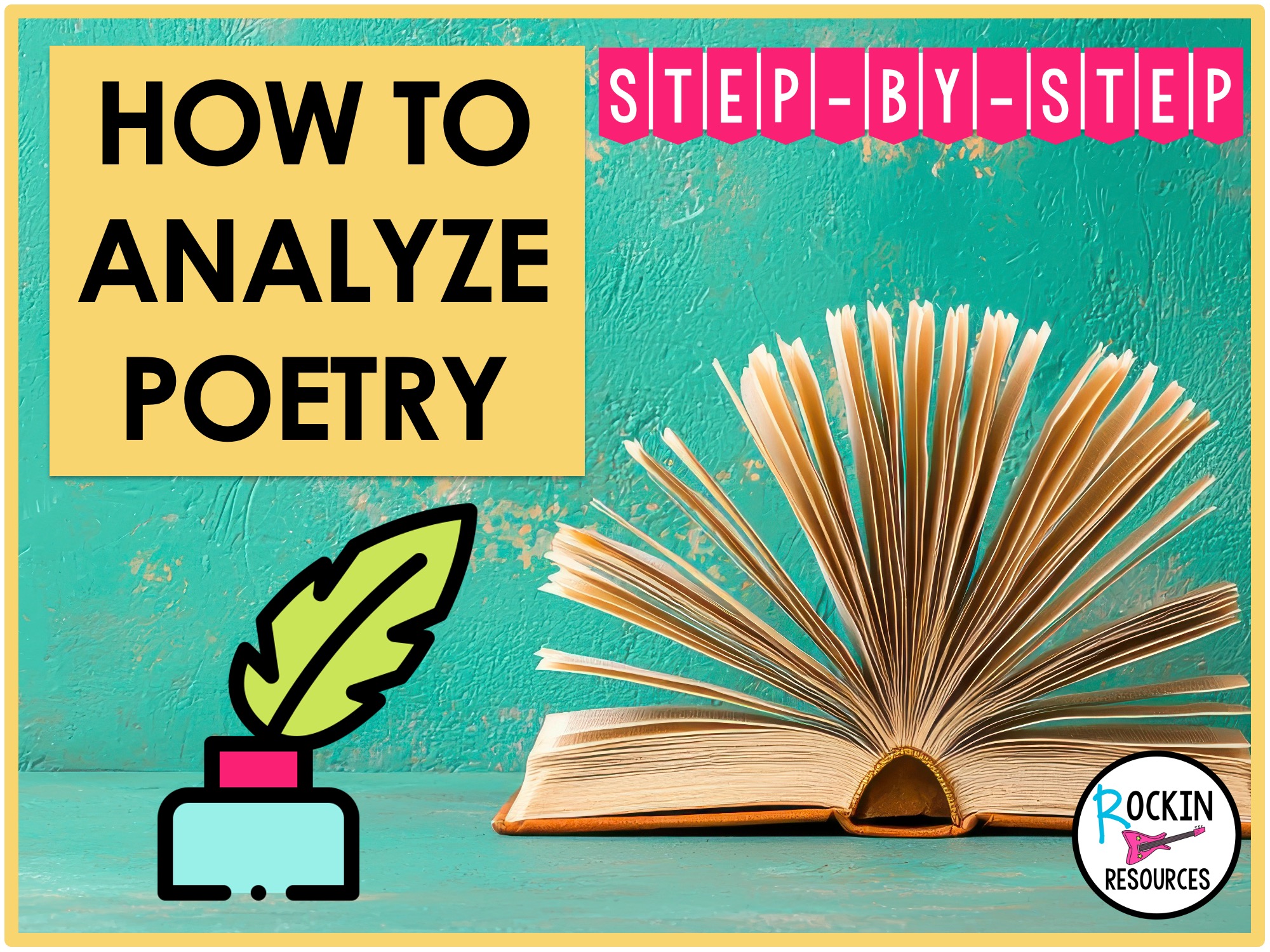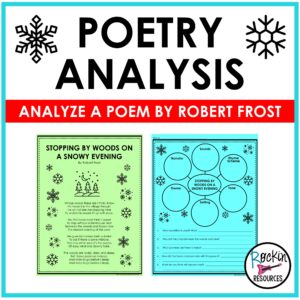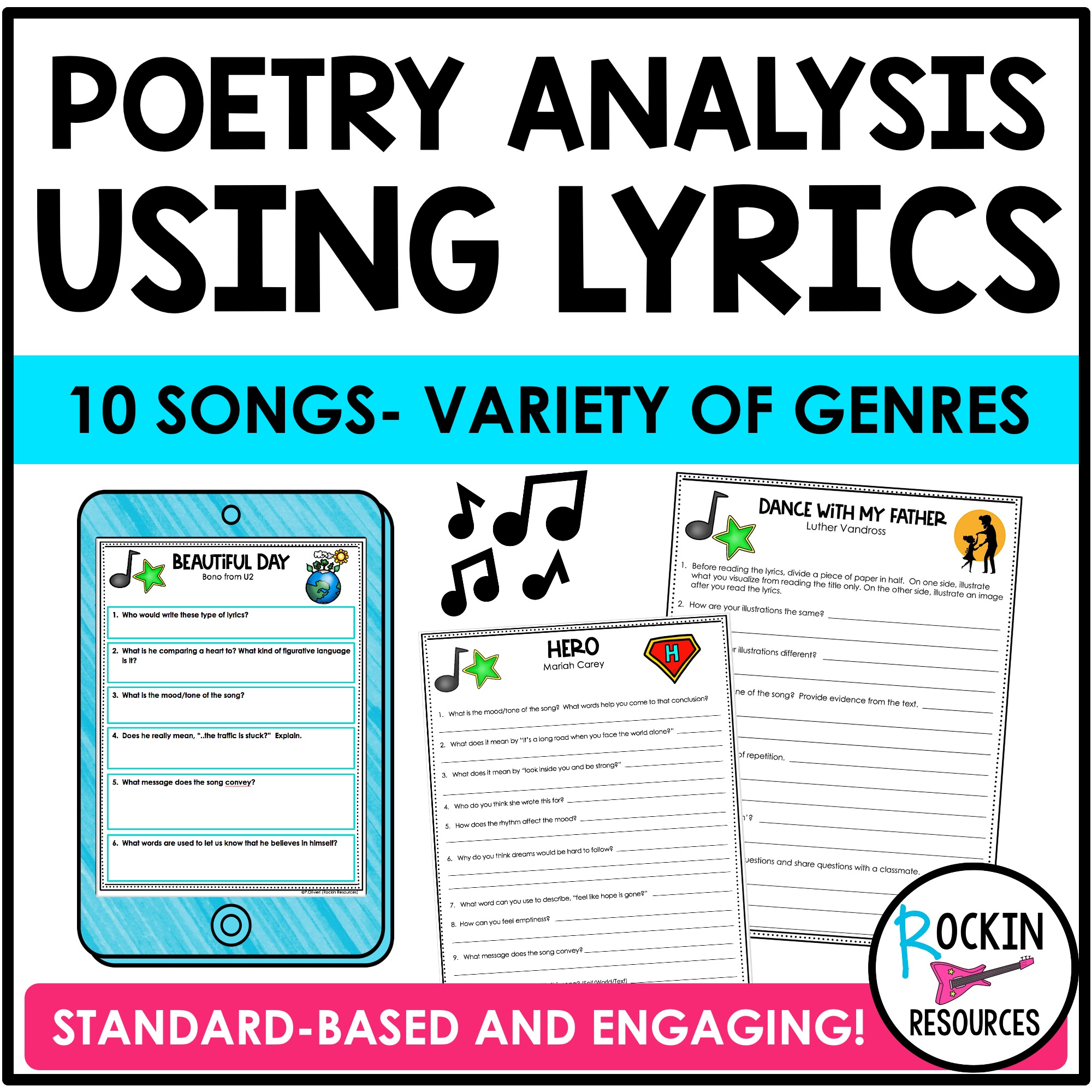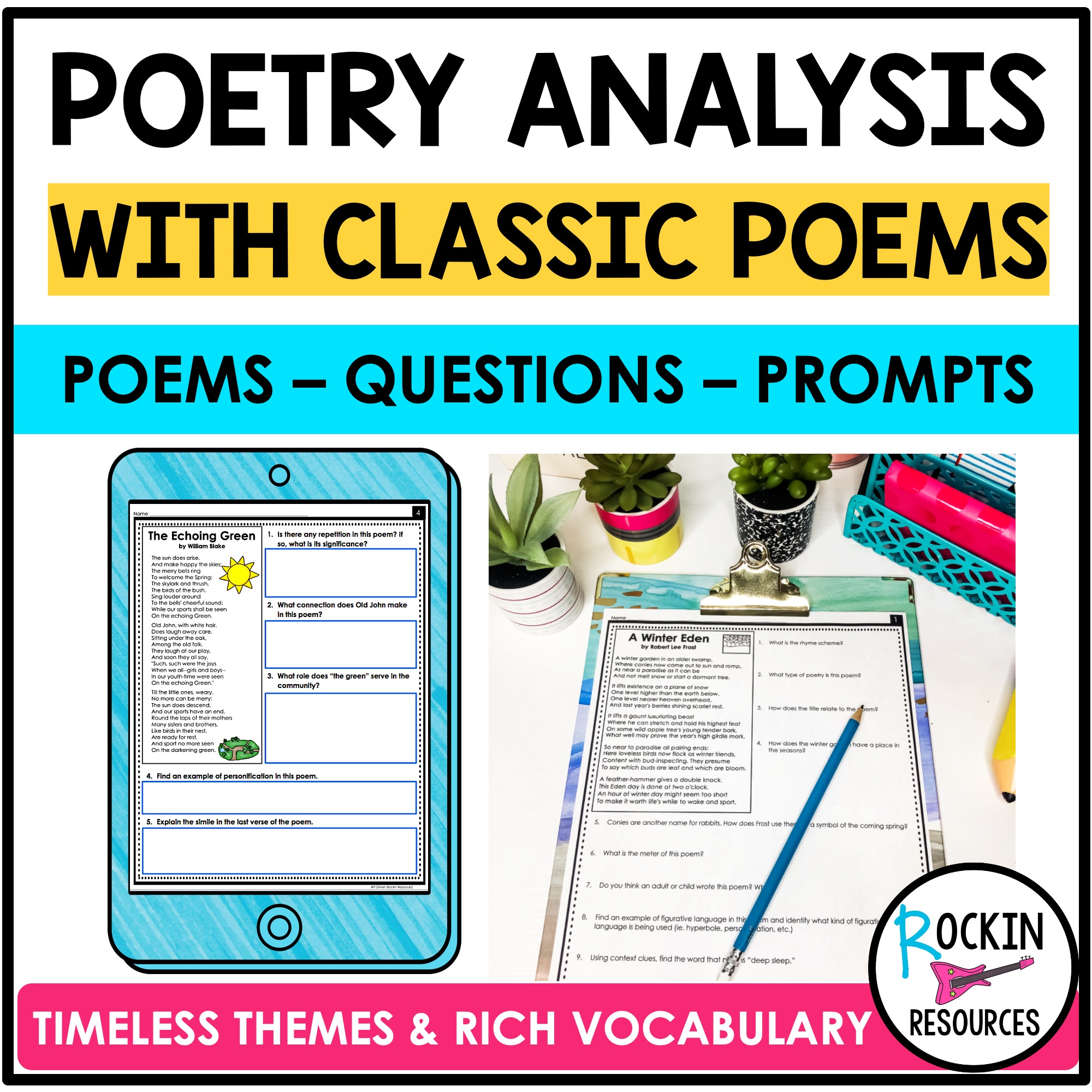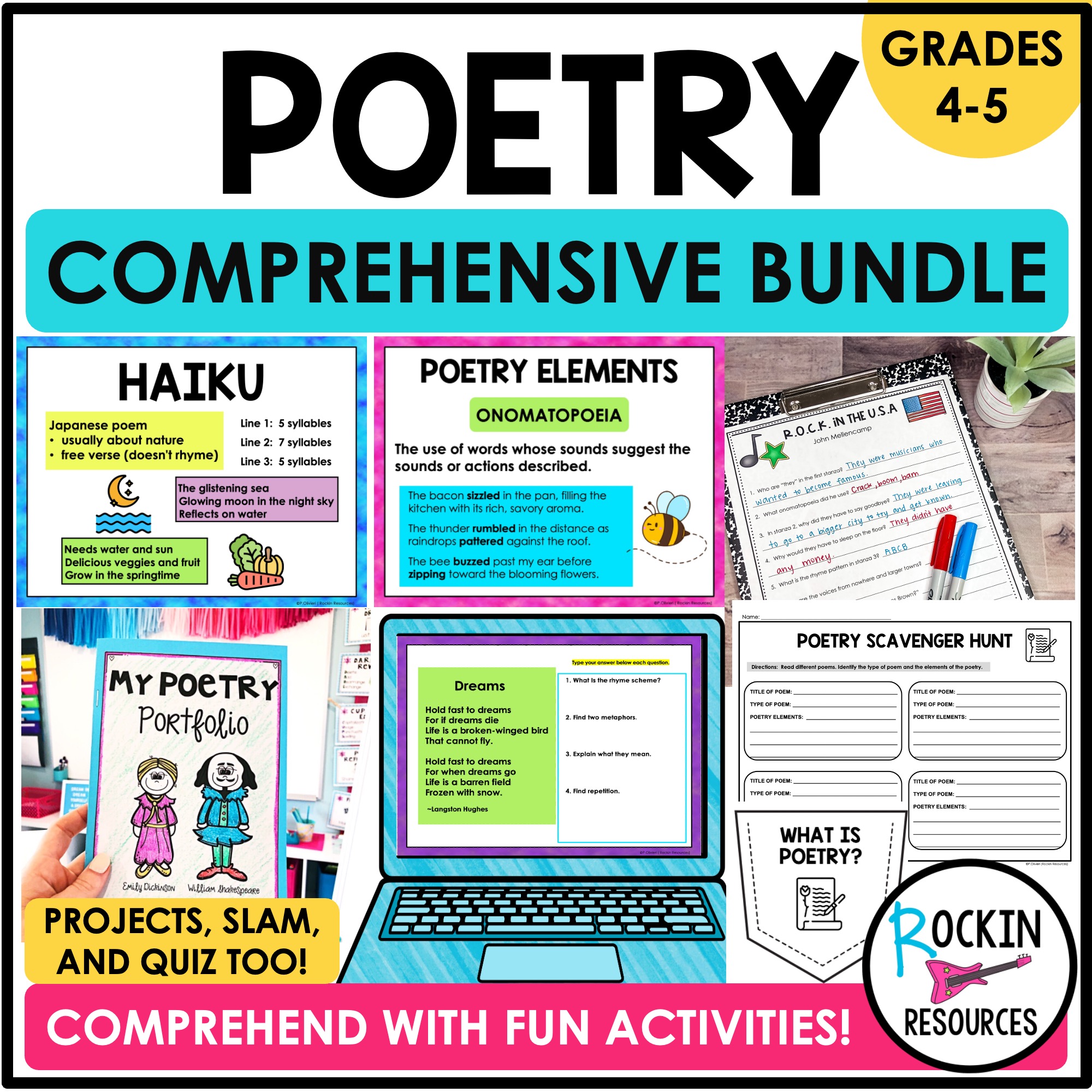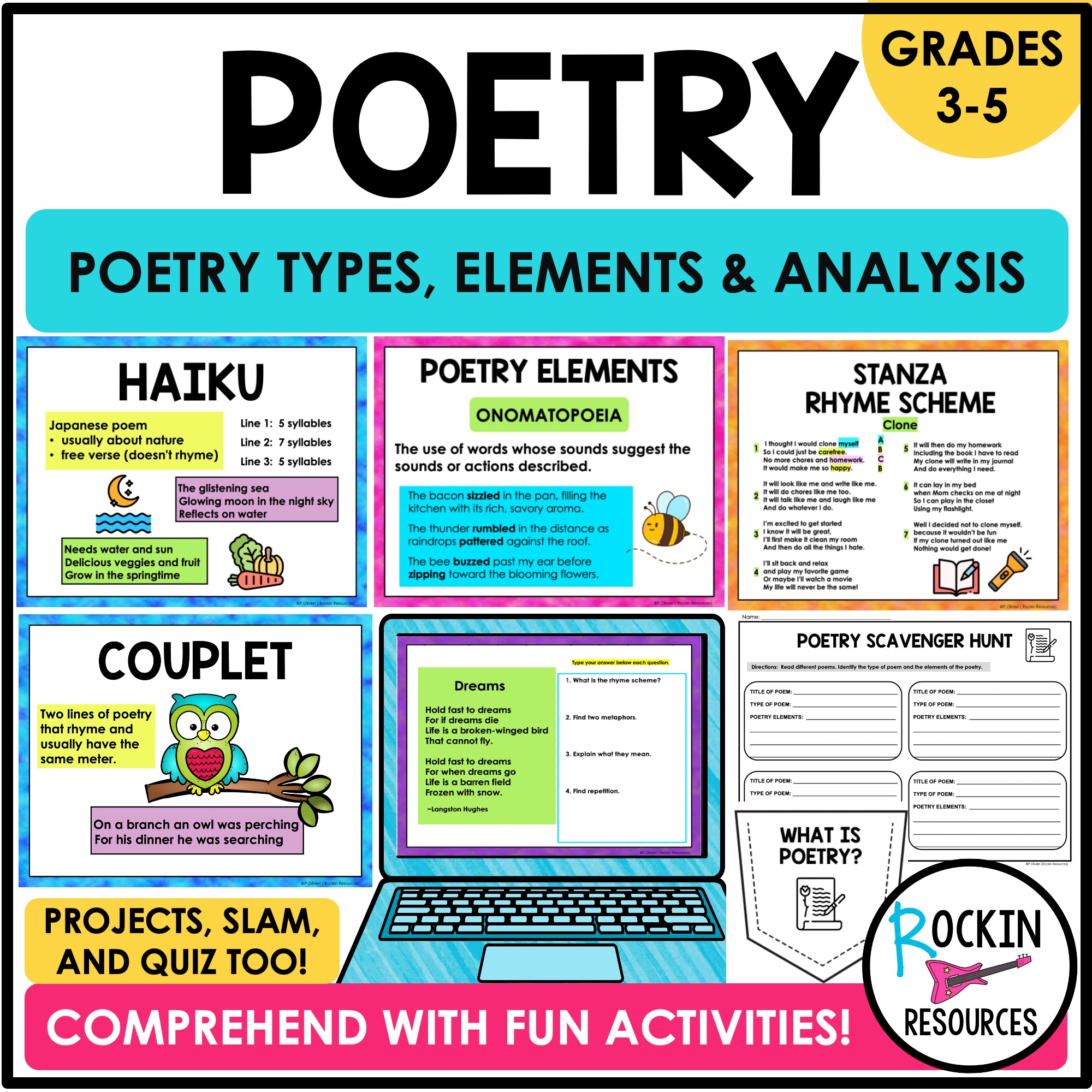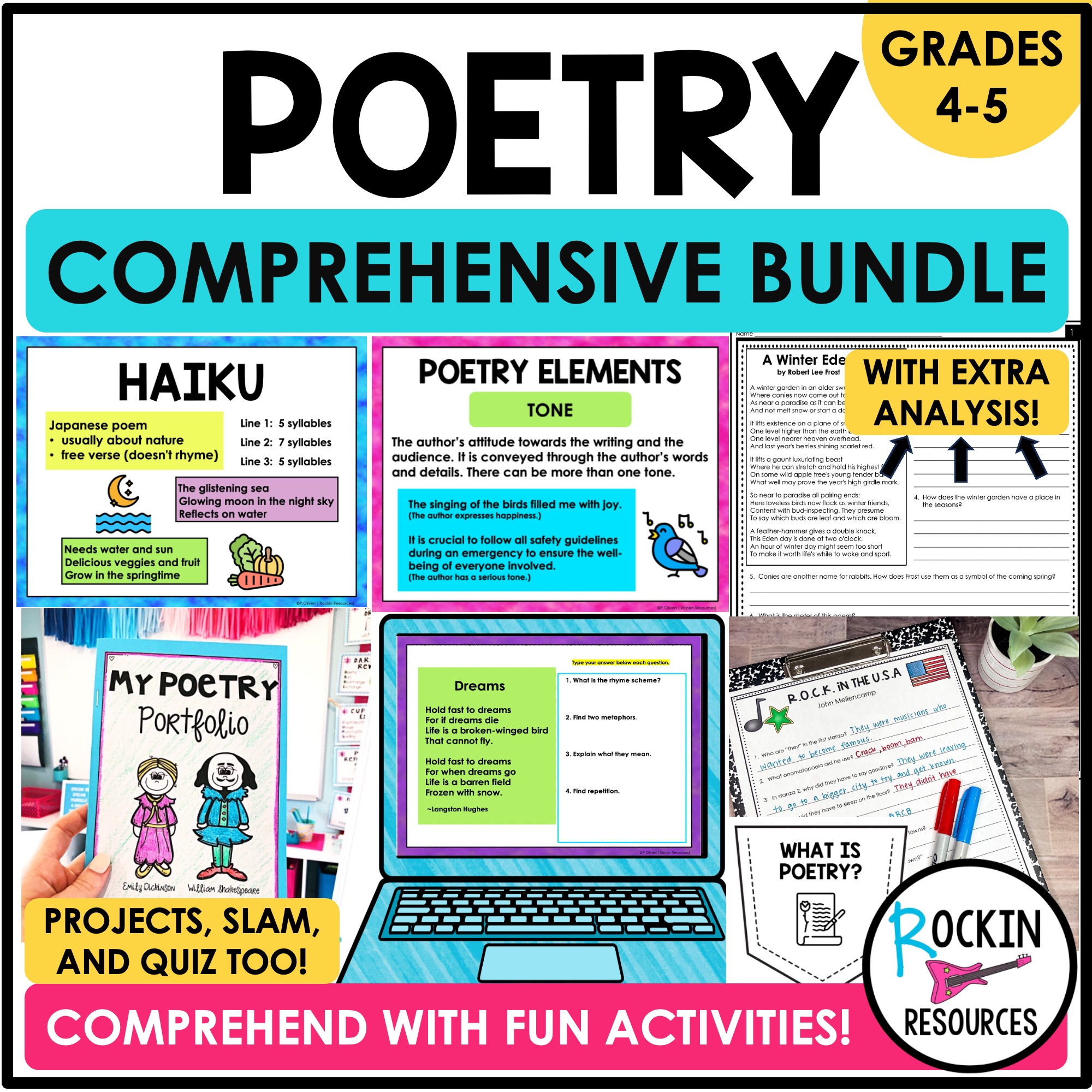Poetry can be powerful, beautiful, and sometimes… a little mysterious. But when students learn how to break it down piece by piece, that mystery turns into understanding—and even appreciation. If you’re wondering how to help students analyze a poem with confidence, this step-by-step guide is the perfect place to start!
Step 1: Read the Poem Aloud (Twice or Three Times!)
Have students choose and read a meaningful poetry. Classic poets like Emily Dickenson and Robert Frost are always excellent choices! This link will take you to Classic Poetry: http://www.emule.com/poetry/ Start by reading the poem silently. Then read it aloud once and then again. Listening to the rhythm, rhyme, and flow can give you clues about the tone and mood. Encourage students to jot down first impressions or words that stand out.
Tip: Ask, “What words or lines caught your attention and why?”
Step 2: Look at the Title
Read the title and discuss it with your students. Does it tell you anything? Does it mention the subject? Is the title obvious to the poem? Is there a tone of the title? Does it show historical significance?
Step 3: Identify the Speaker and Setting
Who is speaking in the poem? Is it the poet, a character, or an unnamed voice? Understanding the speaker’s perspective helps make sense of the message. Also, consider when and where the poem might be set. Is the poet from a specific time period? Can you guess his/her age at the time of writing the poem? Is the poet male or female? Do you know the career of the poet? (politics, religion, music) Does the poet only write about specific subjects or genres? (historical, cultural, humorous)
Ask: “Who is talking? Where are they, and what are they talking about?”
Step 4: Find the Theme or Message
What is the main idea or message of the poem? This is often referred to as the theme. Look for repeated words, symbols, or central ideas that hint at what the poet is trying to communicate.
Theme Examples: Friendship, loss, nature, identity, courage, hope.
Step 5: Analyze Figurative Language
Poets love figurative language! Look for literary devices like:
- Similes & Metaphors
- Personification
- Alliteration
- Onomatopoeia
Example: “The wind whispered secrets” uses personification to make the wind seem human.
Step 6: Examine the Structure and Form
Does the poem follow a certain structure? Look at:
- Stanza length
- Rhyme scheme
- Line breaks
- Repetition
- Poetic form (Haiku, Free Verse, Limerick, etc.)
Structure often reinforces meaning—repetition might emphasize emotion, while a sudden line break can add drama or surprise.
Step 7: Determine the Tone and Mood
How does the poem make you feel? That’s the mood. How does the speaker feel? That’s the tone. Look for clues in word choice and punctuation.
Mood Examples: Joyful, gloomy, calm, nervous, mysterious.
Step 8: Make Connections
Can you connect this poem to your life, another text, or a real-world issue? Making connections brings deeper understanding and personal meaning to poetry.
Step 9: Respond to the Poem
Have students reflect in writing:
- What is the poet trying to say?
- What lines were most powerful or confusing?
- What did you learn or feel?
- Restate the poem in your own words.
- Think outside the box. Look for both evident and implied meanings.
- Explain any of the above steps.
- Were you emotionally moved or touched by the poem?
- Do you have an opinion?
- Do any words stick in your mind?
- Did this poem or poet make an impression? Why?
Step 10: Go Back
Look at the title again. Does it change your thinking? Look at the first and last lines. Does it provoke emotion or a lasting thought?
Ideas:
Make a copy for students to highlight and mark on the poem. Make it fun with different colors. Also, turn it into a detective game! Give your students magnifying glasses while they examine a poem! (Highlight important words, phrases, or repeated/ patterns of words, circle difficult or confusing words, make a list of all the verbs, draw lines to make any connections throughout the poem, and highlight poetic devices.)
Teaching students how to analyze poetry doesn’t have to be overwhelming. By breaking it into manageable steps and giving them the tools to look closely, they’ll gain confidence—and maybe even fall in love with. I hope you found some great ideas for poetry analysis!
Do you want to make poetry analysis REALLY fun? Use lyrics! Yes, songs and raps are forms of poetry!
SEE ALL OF OUR POETRY RESOURCES BELOW TO ROCK YOUR POETRY UNIT!
Discover Related Resources:
-
Poetry Bundle
Original price was: $17.99.$12.99Current price is: $12.99. -
POETRY UNIT WITH POETRY ANALYSIS PRACTICE
Original price was: $24.99.$18.99Current price is: $18.99.
Share this post on Pinterest


